Immediate Action is Crucial: Here’s What to Do
Water damage can strike at any time in Sydney, whether it’s from a sudden storm, burst pipes, or a leaking roof. Immediate action is vital to minimise damage and prevent long-term issues. Here’s a detailed guide on what to do if you face water damage in your Sydney home.
Turn Off the Water Source Immediately
If the water damage is due to internal issues like burst pipes or leaking taps, the first step is to shut off the water supply. Locate your main water valve and turn it off to prevent further flooding. Quick action here can drastically reduce the extent of the damage.
Prioritise Safety First
Water and electricity are a hazardous mix. Before starting any cleanup, ensure the power is turned off in the affected areas. Avoid using electrical appliances in wet spaces to prevent the risk of electric shock. If you’re unsure how to safely turn off the power, contact a professional electrician.
Contact a Professional Water Damage Restoration Service
Water damage restoration is best handled by experts. Contact a local Sydney-based water damage restoration service immediately. These professionals have the right equipment, experience, and knowledge to manage the situation safely and effectively. They can assess the damage, remove excess water, and start the drying and restoration process.

Document the Damage for Insurance Claims
Take photos and videos of the affected areas as soon as possible. This documentation is crucial for insurance claims and can help you secure the compensation needed for repairs and restoration. Be thorough in your documentation, capturing all visible damage to your property and belongings.
Remove Excess Water Promptly
While waiting for the professionals, try to remove as much standing water as possible using mops, towels, and buckets. Quick water removal can prevent further damage. However, avoid using electrical appliances during this process to stay safe.
Ventilate the Area to Prevent Mould
Open windows and doors to allow fresh air to circulate and help with drying. Use fans if you have them, but only if it’s safe. Proper ventilation helps prevent mould growth, which can start within 24 to 48 hours of water exposure.
Protect Your Belongings
Move valuable items, furniture, and electronics to a dry area. If possible, lift furniture off wet floors to prevent further damage. Place aluminium foil or wooden blocks under furniture legs to avoid moisture absorption.
Check for Hidden Damage
Water can seep into walls, floors, and ceilings, causing hidden damage not immediately visible. Professionals can use specialised equipment to detect moisture levels and ensure all affected areas are properly dried. Ignoring hidden moisture can lead to mould growth and structural issues later on.
Prevent Mould Growth
Mould thrives in damp environments and poses serious health risks. Ensure all affected areas are thoroughly dried to prevent mould. Professionals may use dehumidifiers and other equipment for thorough drying. If you notice signs of mould, such as a musty smell or visible spores, contact a mould remediation specialist immediately.
Review and Update Your Insurance Policy
After dealing with water damage, review your home insurance policy to understand what is covered. Consider updating your policy to include comprehensive water damage coverage if it’s not already included. This provides peace of mind and financial protection for future incidents.
Final Thoughts
Dealing with water damage in Sydney can be overwhelming, but quick and informed action can significantly reduce the impact. Remember to turn off the water source, ensure safety, document the damage, and call a professional restoration service. By following these emergency tips, you can protect your home and belongings from further harm and begin the recovery process effectively.
Water damage is not just an inconvenience; it’s a serious problem that requires prompt attention. Don’t wait—act quickly to safeguard your home and health from the dangers of water damage.











